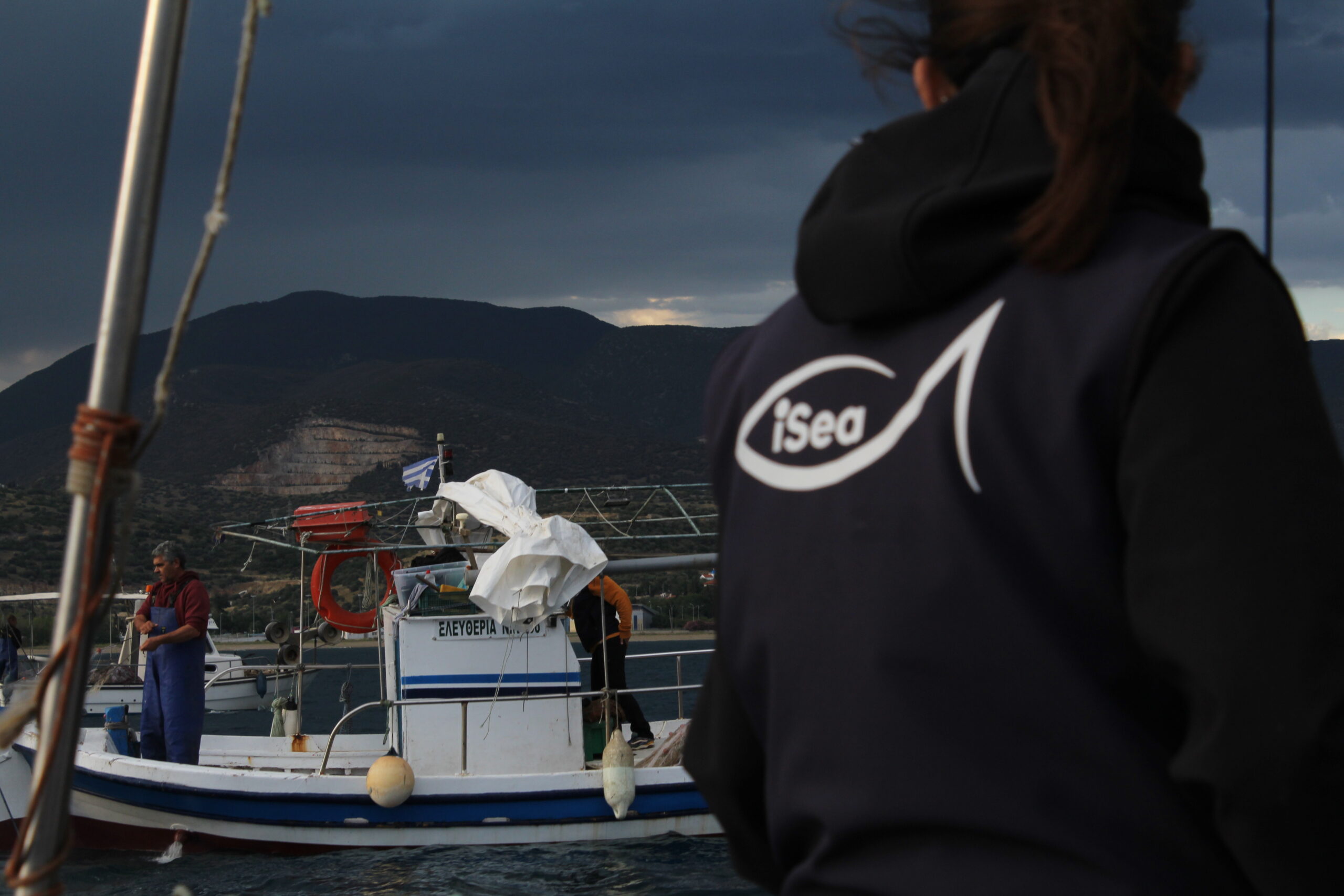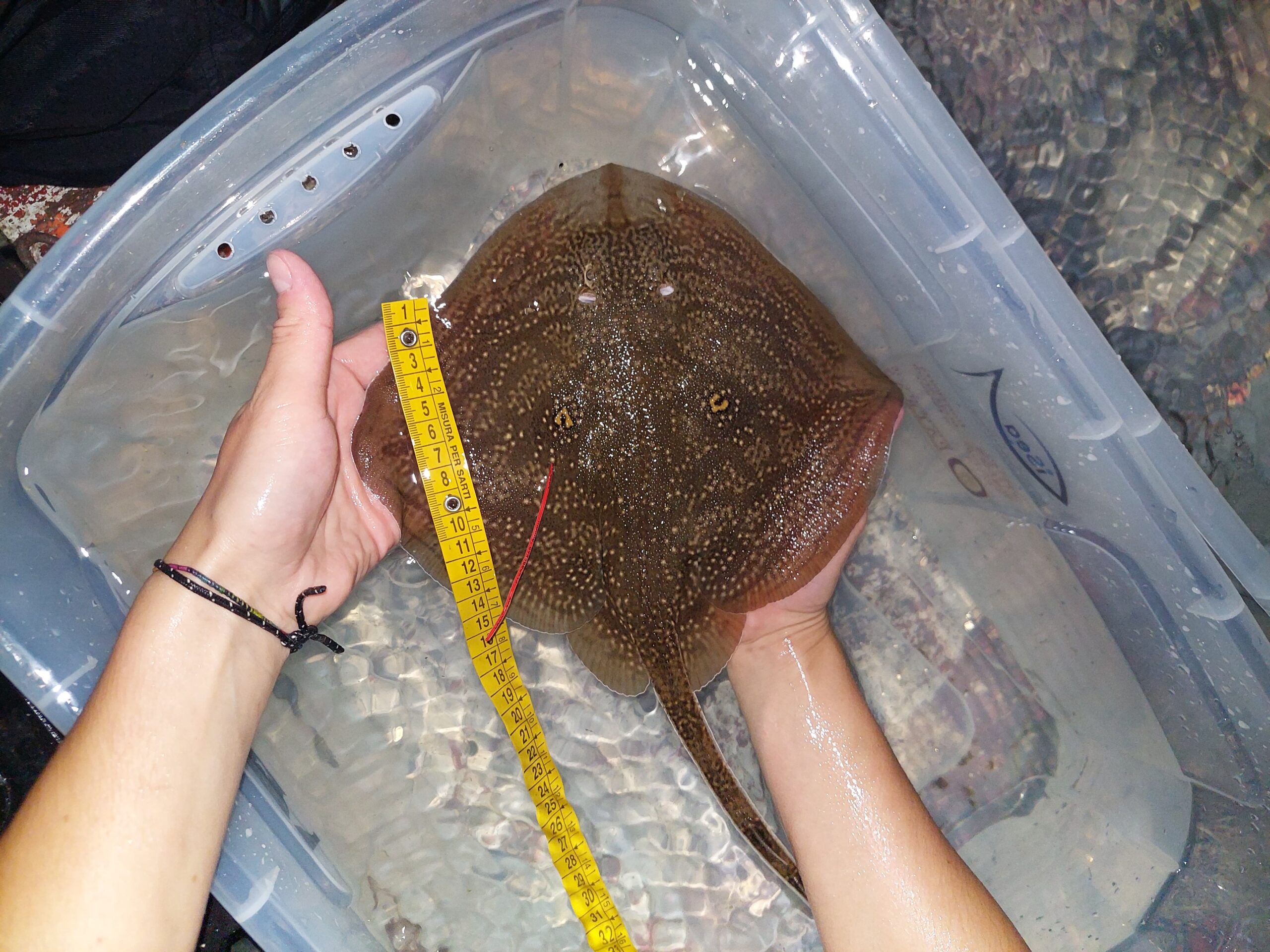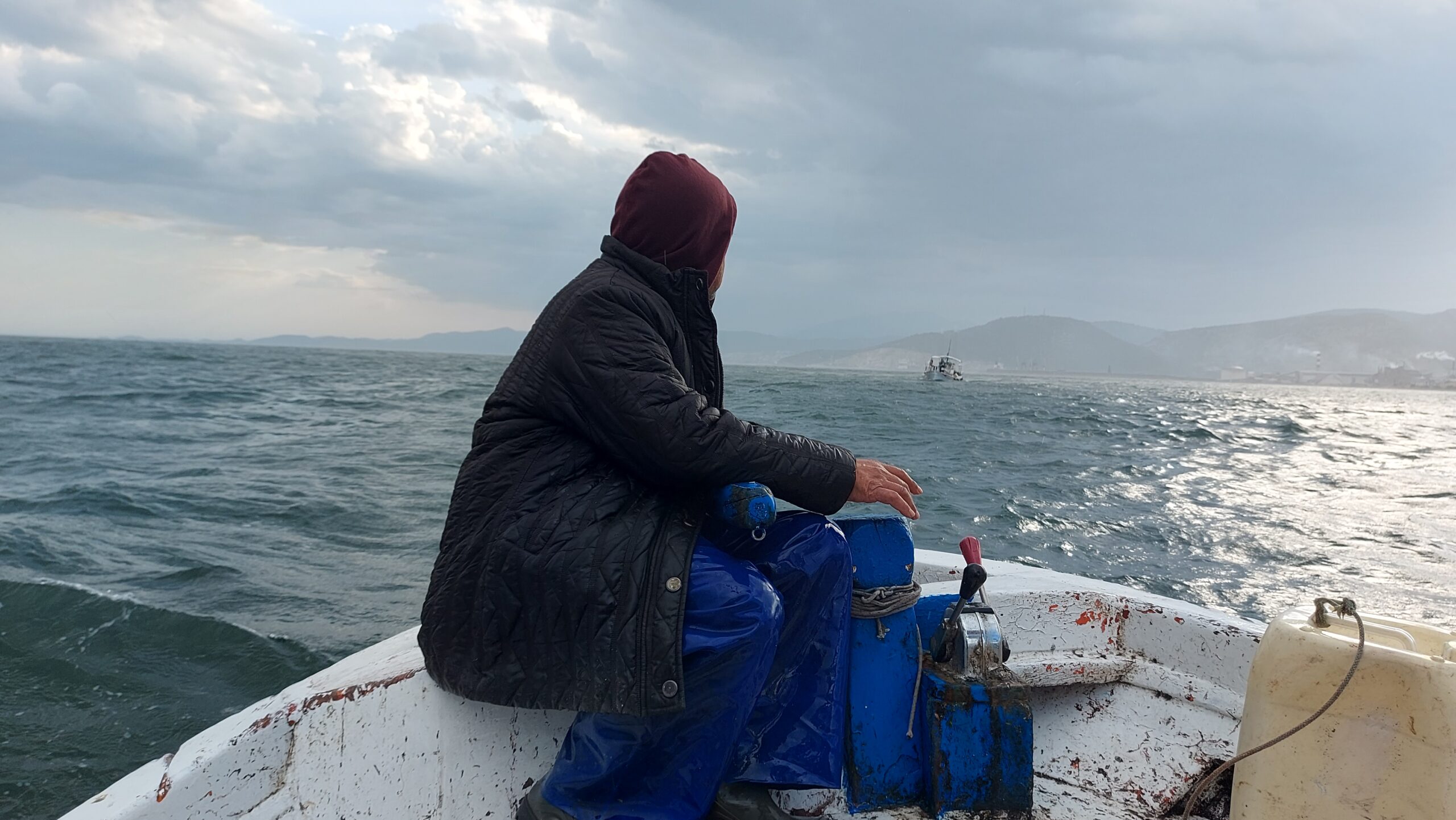Where did the skates go?
“Disentangle this first, it is still very mobile!” Nikos said to me, while he was throwing a patch of the nets with an entangled juvenile towards me. I disentangled using the fishers’ proper way, as taught by them – being very gentle with the skate at the same time. I heard Nikos, who was still hauling the nets, say “Don’t worry, cut one or two mesh, don’t worry about the nets it will suffocate!”. Sampling was complete with 8 neonate rough rays (Raja radula) having a completely healthy recovery after staying in the survival tank for the estimation of short-term post-release mortality assessment (stPRM). We were at the port by that time and Stella, Nikos’ wife, was waiting to join him in cleaning the nets! In the tank, I still had two individuals from the previous sampling, as the waves were harsh and so we would release the individuals inside the small port of Sfageia. I was walking with the tank towards that corner when Nikos said, “Take them to the other side, there are no waves now, the waters are better there and cooler than the ports.” I said thanks and we headed with our intern, Maria, to release them.

Nikos setting the nets as Kyriaki (our colleague) watches from Panagiotis’ boat (they set the nets in parallel to split the damage from dolphin depredation). Photo © Martina Ciprian | iSea
After the releases, we went back to the dock, by which time other fishers had arrived too! Panagiotis, who has also been taking us onboard with him, was telling us he had two individuals, but he was worried because we hadn’t recaptured any tagged individuals yet, and maybe they are not surviving! I started explaining that recapture rates are always low and before I could finish, he asked “But where did they go?”
I looked at him, seeing the same look of anticipation that he does when he looks at the winch while hauling the nets to see what was caught. Their sincere interest in engaging never stops surprising me. Raja radula is a commercial species here in Kavala and the Tracean Sea, which was delineated as an Important Shark and Ray Area (ISRA) for a criterion of Reproduction (something that would never have happened without their past collaboration)! Yet they do care about the juveniles caught as bycatch and the species’ conservation.
Since April, we have managed to: measure and release 70 Raja radula individuals, to assess the short-term Post Release Mortality (stPRM) of 35 individuals, to collect 15 stomachs, tag 18 individuals and even have 2 reported recaptures! One of the reasons we are tagging Raja radula individuals is to assess the long-term survival of the individuals caught as bycatch in the fishing gear, complementary to the short-term Post Release Mortality which is done onboard using tanks. The second reason is to identify aggregations through the movements within the ISRA of Thracean Sea.

Last photo before the release. Photo © Kyriaki Pyloridou | iSea
This would not have been possible without the fishers! The objective of the aforementioned data collection is to translate the findings into management and conservation measures that would help in safeguarding this threatened species in this reproductive area. We consider having the fishing community engaged in our project from the start as a milestone! They take us onboard monthly without any compensation or payment, they keep samples in their refrigerators if needed, hang posters with us for reporting the tags and alert us when they see something of interest (i.e. pregnant individuals, egg cases, etc). I want to dedicate this blog to our collaborators in Kavala, the four small-scale netters and the two bottom trawlers who consciously lead conservation and research in the seas that provide all of us life.

Nikos navigating the boat after setting the nets on a rainy day. Photo © Roxani Naasan Aga - Spyridopoulou | iSea
